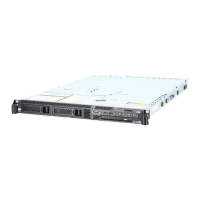| Configure the Server from the Command Line | 69
Field Description Values Default
Partial File Name Suffix Set the filename extension on the destination computer
while the file is being transferred. Once the file has
been completely transferred, this filename extension is
removed.
Note: This option only takes effect when it is set on the
receiver side.
text string blank
File Checksum Method Set the type of checksum to calculate for transferred
files. The content of transfers can be verified by
comparing the checksum value at the destination with
the value read at the source. For more information, see
Reporting Checksums on page 75.
any, md5,
sha1,
sha256,
sha384, or
sha512
any
4.
Save and validate aspera.conf.
Run the following command to confirm that the XML is correctly formatted and the parameter settings are valid:
# /opt/aspera/bin/asuserdata -v
aspera.conf - Transfer Server Configuration
The settings in the <central_server> section of aspera.conf include the network and port that asperacentral
uses to process transfer requests and how to manage the asperacentral database.
Configuration methods: These instructions describe how to manually modify aspera.conf. You can also add and
edit these parameters using asconfigurator commands. For more information on using asconfigurator,
see User, Group and Default Configurations on page 315 and run the following command to retrieve a complete
default aspera.conf that includes the asconfigurator syntax for each setting:
# /opt/aspera/bin/asuserdata -+
1.
Open aspera.conf from the following location:
/opt/aspera/etc/aspera.conf
2.
Add or locate the <central_server/> section, as shown in the following example:
<central_server>
<address>127.0.0.1</address> <!--
Address -->
<port>40001</port> <!-- Port
-->
<persistent_store>enable</persistent_store> <!--
Persistent Storage -->
<files_per_session>1000</files_per_session> <!-- Files
Per Session -->
<persistent_store_path></persistent_store_path> <!--
Persistent Storage Path -->
<persistent_store_max_age>86400</persistent_store_max_age> <!--
Maximum Age -->
<persistent_store_on_error>ignore</persistent_store_on_error> <!-- Exit
Central on Storage Error -->
<compact_on_startup>enable</compact_on_startup> <!--
Compact Database on Startup -->
<ignore_empty_files>true</ignore_empty_files> <!--
Ignore Empty Files -->
<ignore_no_transfer_files>true</ignore_no_transfer_files> <!--
Ignore No-transfer Files -->

